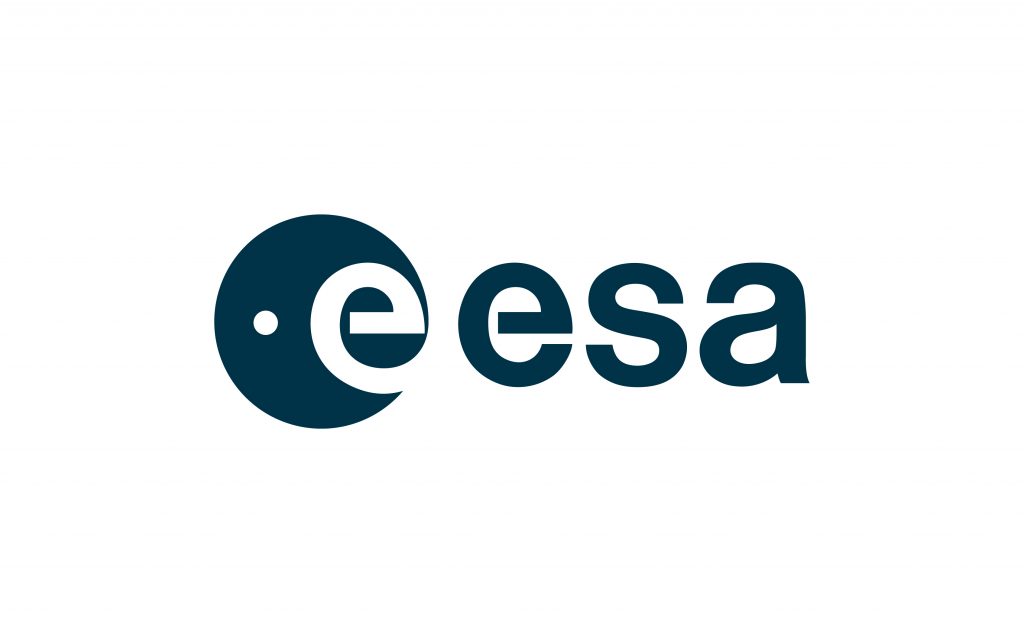Leo Flight is pioneering high-efficiency electric jet propulsion for eVTOLs, offering unmatched speed, range, and quiet operation. Their technology could transform urban air mobility, cargo drones, and defense applications. Learn how this U.S.-based innovator is pushing the boundaries of electric flight.
MIT’s Fuel Cell Breakthrough: A Viable Alternative to Hydrogen for Electric Aviation?
While hydrogen dominates clean aviation discussions, MIT’s breakthrough fuel cell achieves comparable range without infrastructure overhauls. This analysis draws on DOE, EASA, and ICCT data to argue for technology-neutral policies in the race to decarbonize flight.
Cork: The Up-and-Coming Hero of Sustainable Innovative Mobility
There are more solutions than obstacles. Nicolas Zart
Donald Thomas, NASA Astronaut, famously says: “Never leave Earth without cork.” And he makes a point of it. Yet most of us know cork as the humble stopper in wine bottles—tossed aside without a second thought. But did you know that this 5,000-year-old material shields spacecraft, silencing EVs, and even protects eVTOL batteries from fire, EMFs, and more?
From NASA’s Mars landers to electric vehicles (EVs) interiors, cork is revolutionizing innovative mobility. So, pun intended, let’s uncork its potential.

From Earth to Space
From NASA to the European Space Agency (ESA), the latter’s IXV mission marked a turning point for cork. As Jean-Jacques Dordain, ESA’s former Director-General, noted, cork was critical for the Ablative Thermal Protection System during re-entry. See Amorim, 2015.

And this is how it works. The Portuguese cork leader, Amorim Cork Composites, partnered with Thales Alenia Space to develop the P50 cork, a silicone-cork hybrid to shield antennas and electronics from EMI. This composite can withstand up to 2,200°C (3992°F ) during atmospheric re-entry.

But back on Earth, cork is applied to EVs, electric Vertical Take-Off and Landing (eVTOLs), and Beyond. With EVs, Tesla and other EV makers use cork-polymer composites for dashboards, door panels. Cork is 50% lighter than synthetics with a much better carbon footprint. It is also ideal for acoustic insulation, reducing noise by as much as 30% than synthetic alternatives.
On a personal note, I was one of the first EV journalists to test the BMW electric i3 in 2014. I remember being impressed by the cork-trimmed interior as a way to show that ‘eco-luxury’ wasn’t an oxymoron.
Slightly back up with Advanced Air Mobility (AAM), cork is an ideal material to help with fireproofing. Its stable make-up makes it ideal for eVTOLs for their battery shielding. It can withstand fires up to 1,200°C or 392°F. It is also ideal for vibration damping, which is so critical for organ transport, especially as we now turn our attention to drones. This extends to other industries, such as rail and maritime. Cork-rubber mounts dampen vibrations in high-speed rail and on sea vessels. Airbus uses it as cryogenic insulation for its hydrogen fuel system testing.
Cork’s Superpowers By the Numbers
| Property | Value | Outperforms |
|---|---|---|
| Thermal Conductivity | 0.04 W/m·K | Fiberglass (0.05 W/m·K) |
| EMI Shielding | 60–80 dB attenuation | Most plastics |
| Sustainability | 100% biodegradable | Aluminum/synthetics |
Source: Fraunhofer Institute, 2023
The Cork Sustainability Prowess
After a devastating 2011 fungi attack, Amorim doubled down on R&D and today proved through this study that cork stoppers are 25% more sustainable than aluminum and synthetics. The Corticeira Amorim’s study, (“Analysis of the life cycle of Cork, Aluminum and Plastic Wine Closures”), developed by PricewaterhouseCoopers, concluded that, “concerning the emission of greenhouse gases, each plastic stopper released 10 times more CO2, whilst an aluminium screw cap releases 26 times more CO2 than does a cork stopper. For example, to produce 1,000 cork stoppers 1.5 kg CO2 are emitted, but to produce the same amount of plastic stoppers 14 kg of CO2 are emitted and for the same amount of aluminium screw caps 37 kg CO2 are emitted.”

And with zero waste, 70% of Amorim’s energy comes from cork byproducts. Cork’s carbon-negative footprint means cork oak forests absorb 14M tons/year of CO₂.
Today, NASA’s Artemis Program is testing cork for lunar habitat insulation. Even MIT is embedding sensors with cork for real-time battery health monitoring.
Cork reminds us that sometimes, the best solutions aren’t invented. Earth has fashioned them for millions of years. So next time you pop a bottle, take a moment to remember that this ‘humble’ material is shielding a spacecraft, satellites, EVs, and your future eVTOL.”
🔗 Further Reading:
Here is the video of the article.
From Wine Bottles to Spacecraft: Cork’s Silent Revolution in Mobility!
In this episode of The Ways We Move, Nicolas Zart uncorks the untold story of a material quietly reshaping sustainable mobility—from NASA’s Mars landers to BMW’s electric vehicles, rail, maritime, and more.
🔊 Key Insights:
Space-Tested: How cork shields spacecraft during re-entry (and why NASA is eyeing it for lunar habitats).
EV Revolution: Cork’s role in lightweighting and soundproofing electric vehicles.
Carbon-Negative: Why harvesting cork saves forests and outperforms aluminum/plastic.
Future Frontiers: Cork’s potential in Advanced Air Mobility (AAM) and beyond.🕒 Chapters:
00:00 – Cork’s Ancient Legacy Meets Modern Mobility
02:49 – NASA, ESA, and the Space-Grade Cork Revolution
05:34 – How BMW and Tesla Are Using Cork Today
10:57 – Why Cork is the Ultimate Sustainable Material
14:41 – What’s Next? Cork in eVTOLs and Lunar Base
You can listen to the podcast here.
▶️ Watch on YouTube: https://www.youtube.com/@TheWaysWeMove 📺
🔊 Apple Podcasts: https://podcasts.apple.com/ca/podcast/the-ways-we-move/id1797599255 🔊
🎙️ Amazon Podcasts: https://music.amazon.com/podcasts/cd3349e1-275f-4691-ae38-f1b6a153d5e5/the-ways-we-move 🎙️
🎧 Listen on Spotify: https://open.spotify.com/show/4V0qe3eZqublwn6dasXWCf 🎧
📻 iHeart Radio: https://www.iheart.com/podcast/269-the-ways-we-move-268614085/ 📻
🌱 Buzzsprout: https://thewayswemove.buzzsprout.com/ 🗣️
📢 Subscribe for more insights into the future of mobility and support the show! https://www.buzzsprout.com/2428454/supporters/new 📡
Clarification: This is not paid advertising for Amorim. It just happens that the company is at the forefront of cork technology.
Rome 2025: The Definitive AAM MasterClass for Airport Leaders
The aviation industry’s most urgent question: How will airports adapt to Advanced Air Mobility?
Hosted by UrbanV and Aeroporti di Roma, this inaugural AAM MasterClass (Sept 23–25, 2025) is the first program to unite airport leaders, skeptics, and innovators—including Adam Cohen, Kolin Schunck, Clint Harper, Sergio Cecutta, and Rex Alexander—for actionable dialogue on:
Infrastructure: Vertiport integration with existing airports.
Policy: Navigating EASA/FAA regulations.
Economics: Budget frameworks for hesitant airports.
Why attend?
🎯 100-seat limit: Intensive, collaborative learning.
🤝 Bridge divides: Engage with proponents and skeptics alike.
🏛️ Location: Rome Fiumicino’s Innovation Hub—a living AAM lab.
“This isn’t just training—it’s the foundation for aviation’s next decade.” – Nicolas Zart
📣 Reserve your seat → AAMMasterClass.com
Skyway CEO Cliff Cruz on the Future of Advanced Air Mobility
In the latest episode of The Ways We Move podcast, I sit down with Skyway CEO Cliff Cruz to explore the exciting innovations shaping Advanced Air Mobility (AAM). From vertiport operations to seamless airspace management, Cliff shares insights on how Skyway is connecting air and ground transportation. Don’t miss this conversation about the future of mobility!
Celebrating The Ways We Move Podcast with interviews and insights!
It’s been a whirlwind three months since launching The Ways We Move Podcast! In this article, I share why our human-focused approach to mobility innovation sets us apart—from revealing the people behind groundbreaking technologies to exploring how these advancements shape our society. Join me on this journey as we integrate our episodes right here on electricairmobility.news, and get a sneak peek into what’s next.
AAM News Roundup and More
In this Electric Air Mobility news round up for the end of January 2025, we look into AAM News round up January 2025, Oklo nuclear energy, FCC AAM spectrum rule change, Amprius battery energy density, and Leo Flight Solo eVTOL
Electric Air Mobility News Round Up, January 10
Catch up on the second week of January 2025’s Advanced Air Mobility news: updated FAA EB 105A, Lilium, gets a cash injection, Wisk builds its first Generation 6 eVTOL, and Beyond Aero plans to build a hydrogen business jet!
What is Advanced Air Mobility (AAM)? A Once-in-a-Lifetime Revolution
Discover how Advanced Air Mobility (AAM) evolved from the 1950s dream of urban air mobility (UAM) into a transformative solution for efficient, sustainable, and inclusive air transportation, powered by cutting-edge technology and infrastructure.
Electric Air Mobility News Roundup – January 2025
Catch up on January 2025’s Advanced Air Mobility highlights: Elfly partners with H55 on electric trainers, FAA and EASA strengthen AAM safety standards, Volocopter navigates insolvency, and SkyDrive unveils eVTOL routes in Osaka.








